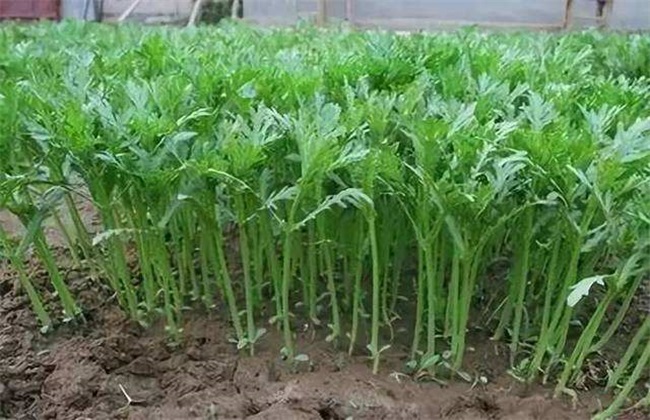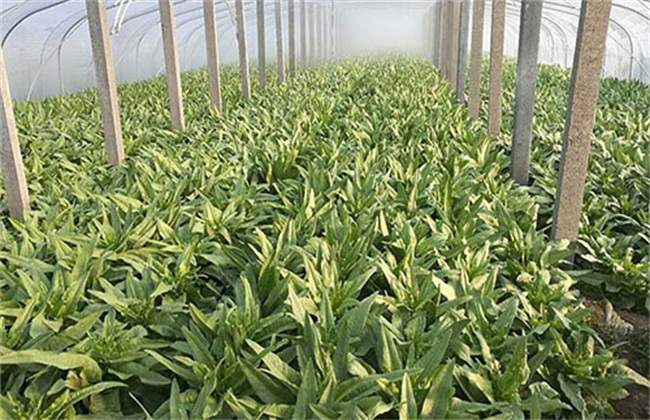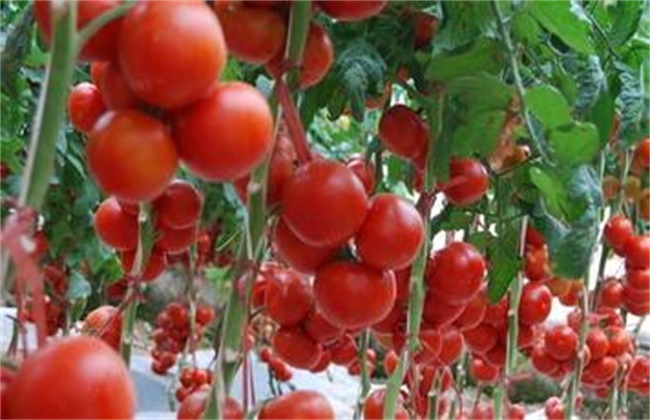How to increase the yield of Artemisia annua
Artemisia annua is called Artemisia seed stalk, chrysanthemum cauliflower and so on, is a kind of annual biennial herb of Compositae. The economic value of Artemisia annua is very high, and it has various functions such as eliminating food and appetizer, clearing blood and nourishing the heart. Therefore, the planting area of chrysanthemum in China is very large, but when planting chrysanthemum, the yield is a problem that needs to be solved. So how to increase the yield of chrysanthemum? Let's take a look at it with the editor.

1. Temperature control
Chrysanthemum chrysanthemum likes to be in a cool and humid environment, has a strong cold resistance, can not grow normally in a high temperature environment. In the process of its growth, the suitable temperature is about 18-19 degrees. If it exceeds 28 degrees, Artemisia annua will grow badly and lead to a decrease in yield. Therefore, high temperature is generally the main reason for the failure of chrysanthemum planting. Therefore, if you want to increase the yield of chrysanthemum, then temperature control is very important to ensure that the temperature is within the suitable growth range of chrysanthemum. When the temperature is too high, we should pay attention to shading and cooling, not watering when the ground temperature is high, to prevent burning the root of chrysanthemum.
2. Prevent lodging
When planting chrysanthemum, if it is not managed properly, such as too dense planting, small temperature difference between day and night and too much watering and fertilization, it is very easy to lead to overgrowth and lodging. After lodging, chrysanthemum plants will not only lead to a decline in yield, but also the lower part of the plant permeability will become worse, easy to cause rotten leaves, which will also reduce the commercial value of chrysanthemum. Therefore, we should pay attention to do a good job of management, avoid the lodging of chrysanthemum, and control the amount of fertilizer and planting density. The distance between plants of Artemisia annua can be controlled at about 3cm during the second watering.
3. Reduce humidity
Humidity also has a great effect on the yield of chrysanthemum. In the growth process of Artemisia annua, if the field humidity is too high and the soil water content is large, it is easy to cause the roots of Artemisia annua to be rotted by water, resulting in dead trees, which will also lead to a serious decline in the yield of Artemisia annua. Therefore, we should not only control the amount of water, but also pay attention to take good measures to avoid rain during the rainy season. If the soil water content is too much, then we should timely drainage to prevent waterlogging.
4. Leaf protection
Leaf is not only the key factor to determine the commercial value of Artemisia annua, but also the standard to judge its yield. Therefore, if you want to increase the yield, you must first pay attention to protect the leaves. If you want to protect the leaves, then the prevention and control of diseases and insect pests must be indispensable, such as blight, downy mildew and so on will affect the leaves of chrysanthemum. Therefore, we must pay more attention to prevention, strengthen management, check specific diseases after the onset of the disease, and then treat the disease.
The above is a brief introduction to how to improve the yield of chrysanthemum. That's all for today's introduction. This article is for reference only. I hope it can help you all.
Related
- Where is it suitable to grow horseradish in China? it is expected to see the middle altitude horseradish in Alishan.
- How to prevent tomato virus disease reasonably? (Control methods included)
- Many people like to plant towel gourd on the balcony. What are the main points of this method and management?
- What crops can chili peppers be mixed with?
- Fertilization techniques and matters needing attention in Tomato
- What are the grafting techniques for peach seedlings in spring?
- Harm and control methods of root swelling disease of Chinese cabbage
- What are the pests of sweet potatoes? How to prevent and cure it?
- Symptoms, causes and Control methods of navel Rot in Tomato
- The cause of "Cucumber rotten bibcock" in Farmers' planting Cucumber and its Control Plan



